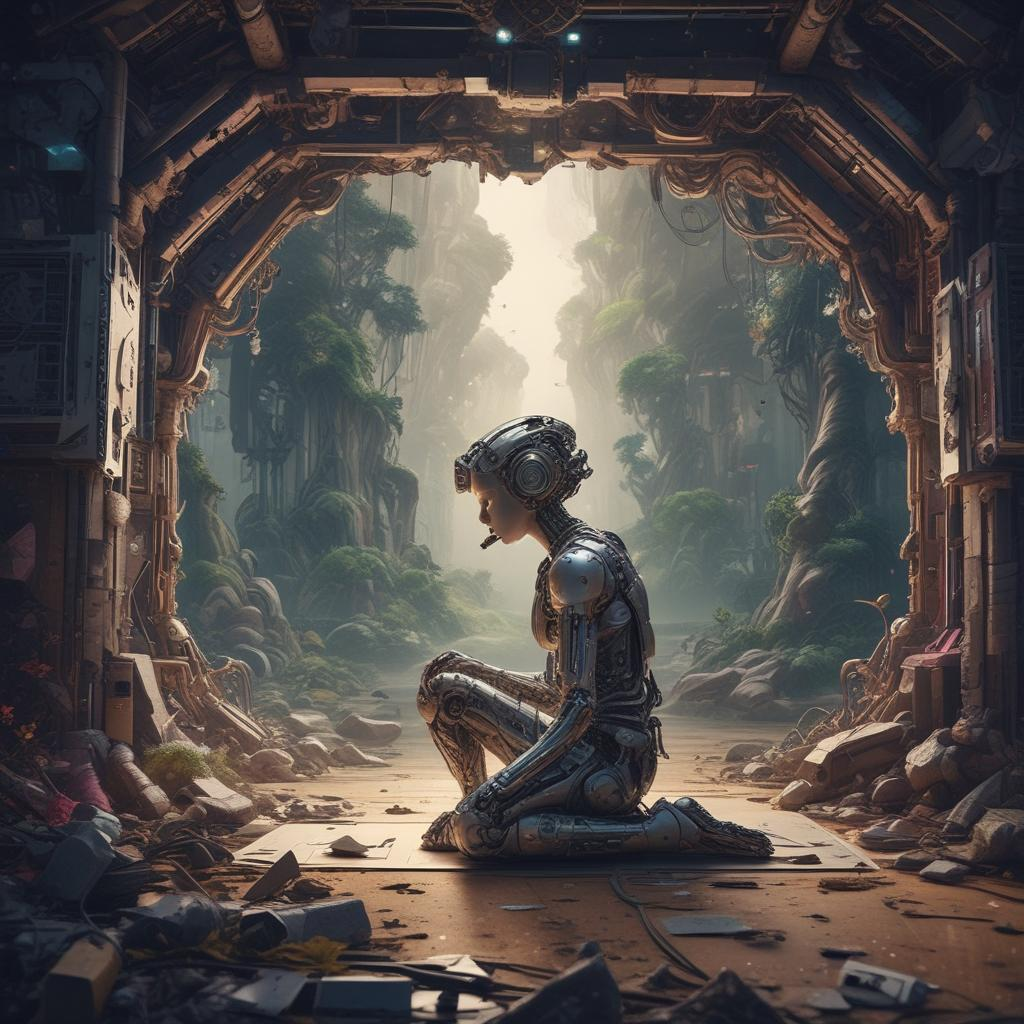Artificial Intelligence (AI) has transformed various industries by automating tasks, analyzing big data, and providing new tools for innovation. In the field of artistry, AI opens up a new frontier, allowing artists to explore computational creativity and expand their creative expression. Incorporating AI into artistic processes can enhance creativity, offering new ways to generate ideas, manipulate media, and execute complex or repetitive tasks efficiently. Here, we explore how artists and creatives can harness the power of AI to elevate their artistic endeavors.

- Enhancing Conceptualization with AI
Starting with a concept or an idea is the first step in any creative process. AI can stimulate creativity by providing artists with a vast array of starting points. Tools like AI-powered brainstorming software can suggest themes, styles, or even create basic outlines of works based on the input parameters defined by the artist. For instance, inputting a few keywords related to a desired theme can generate images, music snippets, or text drafts that can serve as the foundation for further development.
- Data-Driven Inspiration
AI algorithms are adept at analyzing large sets of data to identify patterns that may not be immediately obvious. Artists can use AI tools to scan through countless examples of art across various styles and periods to gather inspiration or to understand popular trends. This can lead to a deeper understanding of certain aesthetics or techniques, tailoring their work to appeal to specific audiences or to push boundaries in innovative ways.
- Iterative Creation with AI Feedback
AI can act as a virtual collaborator during the creation process. Some AI tools provide real-time feedback on artwork, giving suggestions on color schemes, composition adjustments, or improvements based on the principles of art. Such interactive feedback can be instrumental in refining an artwork by iterations, enhancing the final output considerably.
- Scaling Art Production
AI tools can automate parts of the creative process, making it easier to produce art at scale. For digital artists, AI can replicate certain styles across multiple pieces without the need for manual reproduction, which is particularly useful in graphic design, fashion design, and multimedia art. This can greatly reduce the time and effort involved in creating large volumes of consistent-quality work.
- Exploring New Media and Techniques
AI can enable artists to experiment with novel media and techniques that may be difficult to manage manually. For example, AI-driven tools can simulate complex physical properties of materials or environmental effects on artworks that artists can adjust and manipulate to achieve unique aesthetic results. This experimentation can lead to innovative art styles and modalities, pushing the boundaries of what is possible in art.
- Collaborative Artistry Across Borders
AI facilitates collaboration on a global scale. With cloud-based AI tools, artists from different parts of the world can work together on the same piece, contributing through a shared platform. AI can merge, modify, and enhance their inputs to create a coherent final product. This not only brings diverse perspectives together but also encourages a cross-pollination of artistic ideas.
- Accessibility and Inclusion in Art
AI tools can democratize art making, making it more accessible to people with disabilities or those without formal artistic training. AI-powered software can assist in translating physical movements into digital art or enable voice-controlled artistic software, ensuring that everyone has the opportunity to express themselves creatively and engage in artistic activities.
- Art Analysis and Critique
Curators, art historians, and critics can use AI to analyze artworks on a deeper level. AI can recognize and compare motifs, themes, and techniques across large volumes of work, assisting in curatorial decision-making or in understanding an artist’s evolution. This type of analysis can enrich the narrative around artworks and aid in educating audiences or marketing art effectively.
- Future Forecasting in Art Trends
AI's predictive capabilities can be used to forecast trends in the art world, which can be crucial for artists and galleries aiming to stay ahead. By analyzing market data, social media trends, and past art movements, AI can offer insights into what themes, techniques, or styles might become popular. This information can guide artists in creating work that resonates with future audiences.
- Persistent Learning and Adaptation
The more artists work with AI tools, the more these tools learn and adapt to individual styles and preferences. Over time, AI can become an even more intuitive and effective partner in the creative process. Continuous interaction with AI allows for a dynamic growth in the creative capabilities of both the artist and the AI, leading to a mutually beneficial relationship that consistently produces engaging and innovative artworks.
The integration of AI in artistic processes is not about replacing the artist but rather extending their creative capacity and efficiency. As we continue to explore these collaborations between human and machine, the potential for new forms of art and expression is boundless. AI-assisted artistry not only empowers artists but also enhances the cultural landscape, offering fresh perspectives and unprecedented inclusivity in the world of art.


.jpg)






.jpg)



0 Comments